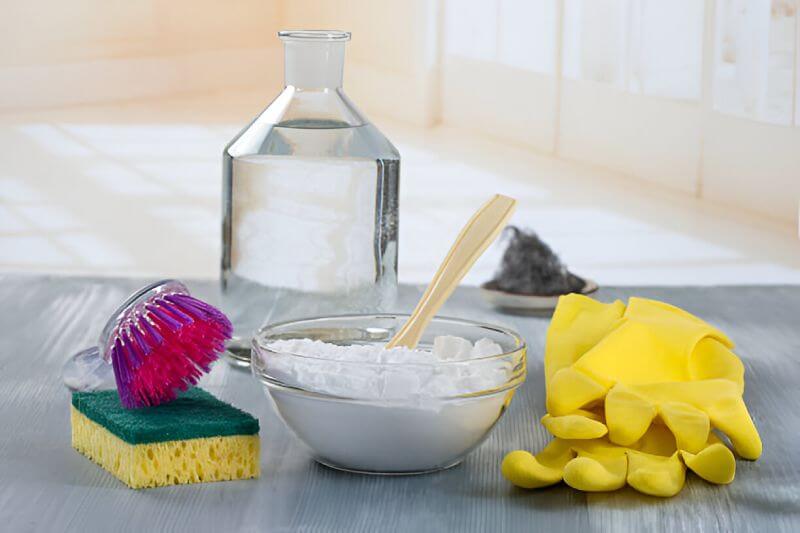A glass of red wine adds sophistication to any evening, but a spill on your carpet can turn the night into a nightmare. Red wine stains are infamous for their deep color and the difficulty they pose in cleaning. However, removing these stains doesn’t have to mean damaging your carpet fibers.
In this blog, we’ll guide you through proven methods to remove red wine stains effectively while preserving the integrity of your carpet.
Why Are Red Wine Stains So Hard to Remove?
Red wine stains are difficult to remove because of their chemical composition and rapid absorption into carpet fibers.
- Tannins and Natural Dyes: Red wine contains tannins, organic compounds that act like natural dyes, binding to carpet fibers almost immediately. This makes the stain resistant to water-based cleaning methods.
- Acidity Helps Penetration: With a pH level between 3.3 and 3.7, red wine is acidic, which weakens carpet fibers and allows the stain to set quickly. The more acidic a liquid, the faster it soaks into fabrics.
- Permanent Staining: If left untreated, a red wine stain can permanently bond with fibers within 24 hours, making removal much more difficult. Acting quickly is key to preventing long-term damage.
By understanding why red wine stains are so stubborn, you can use effective stain removal techniques to remove red wine stains before the damage becomes irreversible.
Steps to Remove Red Wine Stains from Carpets
Step 1: Act Immediately
The first step in dealing with a red wine spill is to act quickly. Grab a clean, absorbent cloth or paper towel and gently blot the stain. The goal is to absorb as much liquid as possible without spreading it further. Avoid rubbing the area, as this can push the wine deeper into the fibers and worsen the stain.
Step 2: Use Club Soda
Club soda is a simple yet effective remedy for red wine stains. Pour a small amount of club soda directly onto the stain and let it fizz for a few seconds. The carbonation helps to break up the wine pigments. Use a clean cloth to blot the area, working from the edges toward the center to prevent spreading.
Step 3: Apply Baking Soda Paste

For more stubborn stains, a baking soda paste can be a lifesaver. Mix three parts baking soda with one part water to create a thick paste. Apply the paste to the stain, covering it completely. Let it sit for at least 20 minutes to absorb the wine pigments. Once dry, vacuum up the residue and rinse the area with clean water.
Step 4: Hydrogen Peroxide and Dish Soap Solution
For older or persistent stains, a mixture of hydrogen peroxide and dish soap is highly effective. Combine one tablespoon of dish soap with two tablespoons of hydrogen peroxide in a spray bottle. Lightly spray the solution onto the stain and let it sit for five minutes. Blot the area gently with a clean cloth, then rinse thoroughly with water.
Note: Always test hydrogen peroxide on a hidden section of your carpet to ensure it doesn’t cause discoloration.
Step 5: Rinse and Dry
After successfully removing the stain, rinse the area with cold water to eliminate any cleaning solution residue. Blot the carpet with a clean towel to absorb excess moisture, and allow it to air dry completely. For quicker drying, use a fan or a hairdryer on a low setting.
Eco-Friendly Solutions to Remove Red Wine Stains
For those who prefer environmentally friendly cleaning methods, there are several effective options to remove red wine stains from carpets without harsh chemicals.

1. White Vinegar and Water Solution
White vinegar is a natural cleaning agent that can break down wine stains while being safe for your carpet and the environment.
- Mix equal parts white vinegar and water in a spray bottle.
- Lightly spray the solution onto the stain and let it sit for 5–10 minutes.
- Blot the area with a clean cloth, working from the edges toward the center.
- Rinse with cold water and blot dry.
2. Lemon Juice and Salt
Lemon juice is a natural bleaching agent, and salt helps absorb the stain.
- Squeeze fresh lemon juice onto the stain and sprinkle a generous amount of salt over it.
- Let the mixture sit for 10–15 minutes, then gently scrub with a soft brush.
- Blot the area with a damp cloth and allow it to air dry.
3. Cornstarch or Talcum Powder
For fresh spills, cornstarch or talcum powder can absorb the wine before it sets into the carpet.
- Sprinkle a thick layer of cornstarch or talcum powder over the stain.
- Let it sit for 15–20 minutes to absorb the wine.
- Vacuum up the powder and repeat if necessary.
Preventative Measures for Red Wine Stains
Prevention is always better than cure, especially when it comes to red wine spills. While accidents happen, taking a few proactive steps can save you time, effort, and stress in the long run. Here are some practical tips to protect your carpets from future spills and stains:
1. Use Wine-Proof Mats and Coasters
One of the easiest ways to prevent red wine stains is to create a physical barrier between your carpet and potential spills.
Place wine-proof mats or coasters in areas where wine is frequently served, such as living rooms, dining rooms, or home bars. Opt for absorbent mats that can catch spills before they reach your carpet, and choose ones with a non-slip backing to prevent accidents caused by slipping or sliding.
2. Act Fast When Spills Happen
Even with preventative measures in place, spills can still happen. The key is to act quickly to minimize damage. Keep a stain removal kit handy in areas where wine is often consumed. Your kit should include clean, absorbent cloths or paper towels, club soda or a homemade cleaning solution, and a small spray bottle for easy application.
3. Apply a Carpet Protector
Carpet protectors are specially formulated treatments that create an invisible barrier on your carpet fibers, making it easier to clean up spills before they become stains.
Purchase a professional-grade carpet protector from a trusted brand and apply it according to the manufacturer’s instructions, ensuring even coverage. Reapply the protector every 6–12 months, or as recommended, to maintain its effectiveness.
4. Choose Stain-Resistant Carpets
If you’re in the market for new carpets, consider investing in stain-resistant options. Many modern carpets are designed with built-in stain resistance, making them easier to clean and maintain.
Look for carpets treated with Stainmaster or similar technologies, and opt for synthetic fibers like nylon or polyester, which are naturally more stain-resistant than wool. Darker colors or patterns can also help camouflage minor stains, keeping your carpet looking fresh and clean.
5. Establish a “No Drinks on the Carpet” Rule
While it may not always be practical, establishing a rule against drinks on the carpet can significantly reduce the risk of spills. Encourage family members and guests to enjoy their drinks at a table or counter, and provide sturdy, spill-proof cups for children or during casual gatherings. This simple rule can go a long way in protecting your carpet from accidental spills.
6. Regular Maintenance and Cleaning
Keeping your carpet clean and well-maintained can make it more resistant to stains. Vacuum your carpet regularly to remove dirt and debris that can attract stains, and schedule professional deep cleaning at least once a year to keep your carpet in top condition.
When to Call a Professional
If a red wine stain persists despite your best efforts, it may be time to consult a professional carpet cleaner. Professionals use advanced techniques and specialized products to remove red wine stains, and even the toughest stains without causing damage.
For a complete guide on tackling various carpet stains, explore our Ultimate Guide to Removing Carpet Stains.
Conclusion
Red wine stains can be intimidating, but with the right methods, they don’t have to be permanent. By acting quickly and using proven cleaning techniques, you can remove red wine stains effectively while keeping your carpet looking its best.

